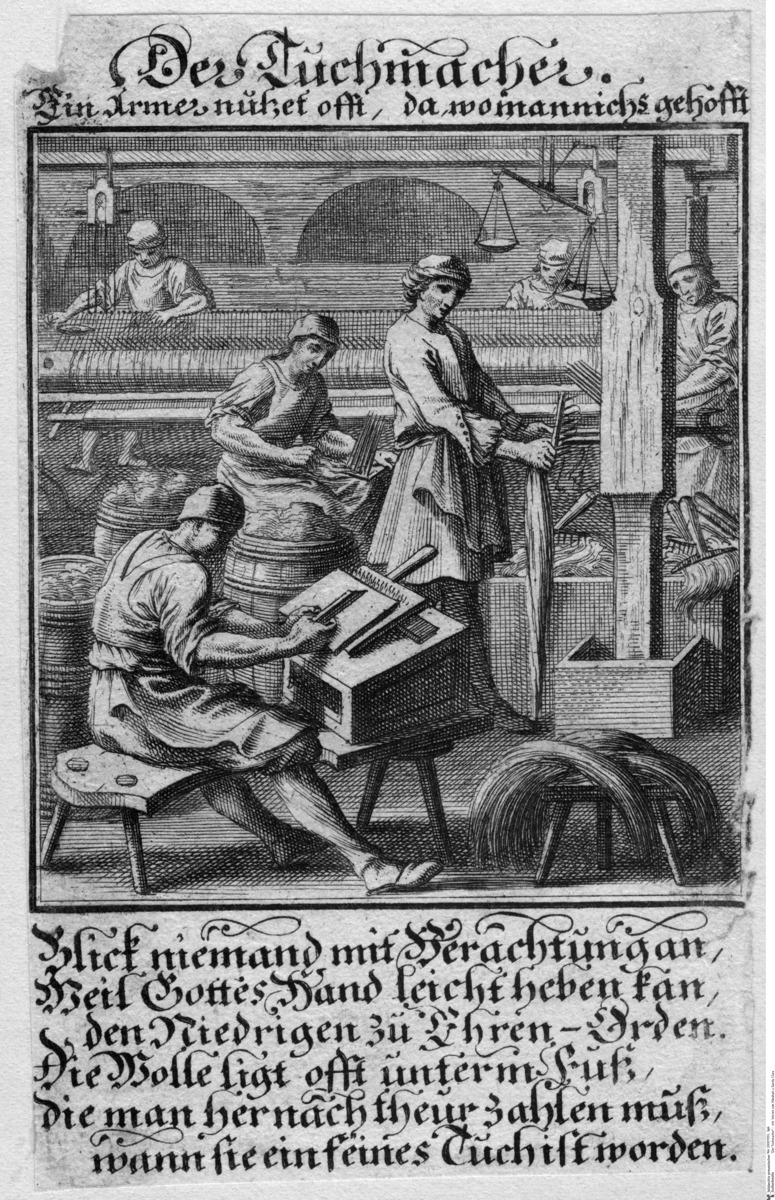Source

Source: bpk-Bildagentur, image number 20001350. For rights inquiries, please contact Art Resource at requests@artres.com (North America) or bpk-Bildagentur at kontakt@bpk-bildagentur.de (for all other countries).
The textile industry continued to play a major economic role in the German territories throughout the seventeenth and eighteenth centuries, despite the fact that German cloth makers were losing European market share to their French and British counterparts. Wool, flax (linen), and silk for the luxury trade were the chief fabrics produced in the German territories. As this illustration shows, at the turn of the eighteenth century, German cloth makers still relied on manual production. This remained the case well into the second half of the eighteenth century. In 1784, decades after the world’s first cotton mill opened in England, the first German textile factory was built near Düsseldorf.
This copperplate engraving by Johann Christoph Weigel (after 1654-1726) was published in his Abbildung der Gemein-Nützlichen Haupt-Stände (Regensburg, 1698), which included verses by Abraham a Sancta Clara (1644-1709), an Augustinian monk who became famous for his earthy, humor-filled sermons and his prolific writings and treatises on moral and religious themes. The verses underneath the engraving emphasize the merits of individual labor and those who perform it.
The Cloth Maker
A poor person is often unexpectedly
useful.
Do not look at anyone with disdain,
Since God’s hand
can easily elevate
The humble to honorable rank.
Often under
our feet the wool does lie
That one pays dearly for
thereafter.
When it has been turned into fine cloth.

Source: bpk-Bildagentur, image number 20001350. For rights inquiries, please contact Art Resource at requests@artres.com (North America) or bpk-Bildagentur at kontakt@bpk-bildagentur.de (for all other countries).
bpk